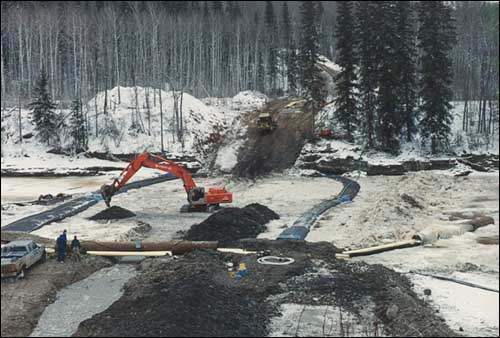Following the discovery of oil at Leduc, Alberta, oil and gas production commenced in a part of the British Columbian western sedimentary basin, in the late 1950s. Oil production peaked at four million cubic meters in 1969 and 1970, and has since decreased to less than two million. Total oil reserves are declining. While natural gas production has peaked at 12 billion cubic meters in 1973, and again in the early 1990s, it is likely to increase further as demand rises. Despite large-scale production, additional discoveries have been large enough to sustain reserves at a high level. To market the gas, a major pipeline extends from the Fort Nelson Basin south to Vancouver and the US Pacific Northwest. There are regional lines leading to Prince Rupert and Kitimat, the south-central and southeast parts of the province, and most recently to Vancouver Island. Natural gas usually passes through processing plants in the producing area to remove sulphur and such products as propane and butane. Natural gas is also a valuable raw material for the petrochemical industry and two export-based plants at Kitimat process gas into ammonia and methanol respectively.
